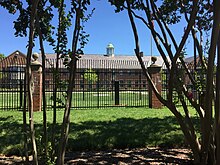
The National Security Agency (NSA) is a national-level intelligence agency of the United States Department of Defense, under the authority of the Director of National Intelligence (DNI). The NSA is responsible for global monitoring, collection, and processing of information and data for foreign and domestic intelligence and counterintelligence purposes, specializing in a discipline known as signals intelligence (SIGINT). The NSA is also tasked with the protection of U.S. communications networks and information systems. The NSA relies on a variety of measures to accomplish its mission, the majority of which are clandestine. The existence of the NSA was not revealed until 1975. The NSA has roughly 32,000 employees.

The United States Department of Homeland Security (DHS) is the U.S. federal executive department responsible for public security, roughly comparable to the interior or home ministries of other countries. Its stated missions involve anti-terrorism, border security, immigration and customs, cyber security, and disaster prevention and management.

Agnes Meyer Driscoll, known as "Miss Aggie" or "Madame X'", was an American cryptanalyst during both World War I and World War II and was known as “the first lady of naval cryptology."
OP-20-G or "Office of Chief Of Naval Operations (OPNAV), 20th Division of the Office of Naval Communications, G Section / Communications Security", was the U.S. Navy's signals intelligence and cryptanalysis group during World War II. Its mission was to intercept, decrypt, and analyze naval communications from Japanese, German, and Italian navies. In addition OP-20-G also copied diplomatic messages of many foreign governments. The majority of the section's effort was directed towards Japan and included breaking the early Japanese "Blue" book fleet code. This was made possible by intercept and High Frequency Direction Finder (HFDF) sites in the Pacific, Atlantic, and continental U.S., as well as a Japanese telegraphic code school for radio operators in Washington, D.C.

The Federal Law Enforcement Training Centers (FLETC) serves as an interagency law enforcement training body for 105 United States government federal law enforcement agencies. The stated mission of FLETC is to "...train those who protect our homeland". It also provides training to state, local, campus, tribal, and international law enforcement agencies. Through the Rural Policing Institute (RPI) and the Office of State and Local Training, it provides tuition-free and low-cost training to state, local, campus and tribal law enforcement agencies.
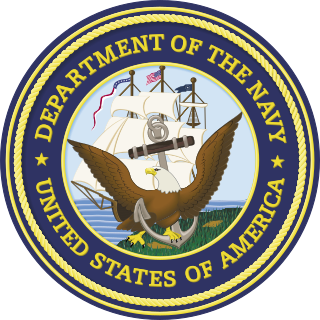
The Naval Air Warfare Center Training Systems Division (NAWCTSD) is an Echelon IV command of the United States Navy, reporting to the Commander, Naval Air Warfare Center - Aircraft Division (NAWCAD) at NAS Patuxent River, Maryland. NAWCTSD is located in Orlando, Florida in the Central Florida Research Park, adjacent to the University of Central Florida (UCF). The facility is a part of a larger military installation within the Central Florida Research Park known as Naval Support Activity Orlando.
Azerbaijani Americans are Americans of the Azerbaijani ancestry from the Republic of Azerbaijan and Iranian Azerbaijan or people possessing Azerbaijani, Iranian, and/or American citizenship. Most Azerbaijani Americans have immigrated to the United States from Azerbaijan, Iran, Germany, Georgia, Russia, Turkey and Ukraine.
The National Security and Homeland Security Presidential Directive, signed by President of the United States George W. Bush on May 4, 2007, is a Presidential Directive establishing a comprehensive policy on the federal government structures and operations in the event of a "catastrophic emergency". Such an emergency is defined as "any incident, regardless of location, that results in extraordinary levels of mass casualties, damage, or disruption severely affecting the U.S. population, infrastructure, environment, economy, or government functions."

Paul Allan Schneider is a former United States Deputy Secretary of Homeland Security. He had previously served as the Under Secretary of Homeland Security for Management. He was responsible for all the department's budget, appropriations, expenditure of funds, accounting and finance; procurement; human resources and personnel; information technology systems; facilities, property, equipment, and other material resources; and identification and tracking of performance measurements.
The Joint Regional Information Exchange System (JRIES) began in December 2002 as an all-source intelligence / information sharing system, designed initially as a grassroots pilot system to connect the California Anti-Terrorism Information Center, the New York Police Department, and the Defense Intelligence Agency (DIA).
EINSTEIN was originally an intrusion detection system that monitors the network gateways of government departments and agencies in the United States for unauthorized traffic. The software was developed by the United States Computer Emergency Readiness Team (US-CERT), which is the operational arm of the National Cyber Security Division (NCSD) of the United States Department of Homeland Security (DHS). The program was originally developed to provide "situational awareness" for the civilian agencies. While the first version examined network traffic and subsequent versions examined content, the current version of EINSTEIN is significantly more advanced.
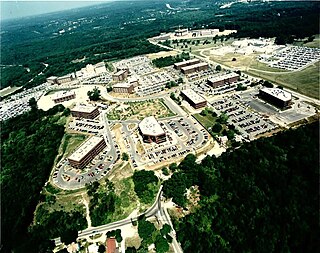
The Friendship Annex, also known as FANX or FANEX, is a National Security Agency (NSA) facility complex located in Linthicum, Maryland, near the Baltimore Washington International Airport (BWI). Established in the 1970s, the complex consists of multiple buildings and serves multiple roles as a cyber espionage station, electronic intelligence processing facility, and NSA Broadcast Network television studio. It is also the primary campus of the National Cryptologic School.
In the United States, there is no unified federal ombudsman service. The role of handling complaints against federal authorities has to some extent been unofficially incorporated into the role of the US Member of Congress. This informal job has become increasingly time-consuming. It is subject to criticism on the grounds that it interferes with a legislator's primary duty, namely to read and be knowledgeable about a bill before casting his or her vote.
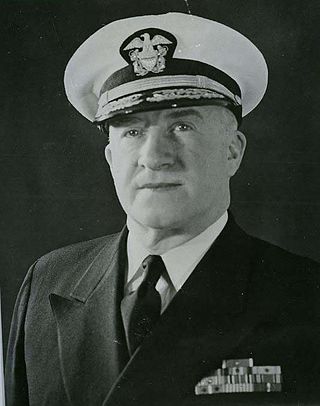
Earl Everett Stone was a rear admiral in the United States Navy. He is most noted for being the first director of the Armed Forces Security Agency, the predecessor to the National Security Agency.
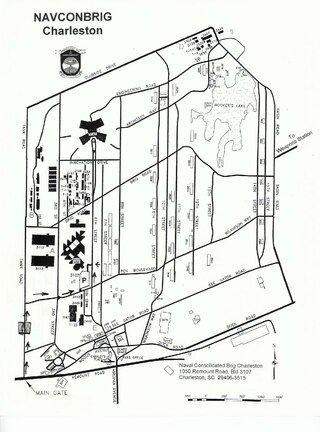
Naval Support Activity Charleston, originally designated Naval Weapons Station Charleston, is a base of the United States Navy located on the west bank of the Cooper River, in the cities of Goose Creek and Hanahan South Carolina. The base encompasses more than 17,000 acres (69 km²) of land with 10,000 acres (40 km²) of forest and wetlands, 16-plus miles of waterfront, four deep-water piers, 38.2 miles (61.5 km) of railroad and 292 miles (470 km) of road. The current workforce numbers more than 11,000 with an additional 3,600 people in on-base family housing.
Warrenton Training Center (WTC) is a classified United States government communication complex located in the state of Virginia. Established in 1951, it comprises four discrete stations located in Fauquier and Culpeper counties.

The Department of Homeland Security Interoperable Communications Act is a bill that would require the United States Department of Homeland Security (DHS), within 120 days of the bill's enactment, to devise a strategy to improve communications among DHS agencies. DHS would be required to submit regular reports to Congress on their progress and the decisions they make.

The Douglas A. Munro Coast Guard Headquarters Building is the current headquarters of the United States Coast Guard and is located in Washington, D.C. on the west campus of the historic St. Elizabeths Hospital. The building is named in honor of Douglas Albert Munro and was completed in 2013.

Naval Support Activity Hampton Roads (NSA HR) is a United States Navy Echelon 4 regional support commander that is responsible to Navy Region Mid-Atlantic for the operation and maintenance of the installation of the same name that it is headquartered on. Adjacent to, but separate from Naval Station Norfolk, NSA Hampton Roads has the largest concentration of fleet headquarters administrative and communication facilities outside of Washington, D.C., including the headquarters for United States Fleet Forces Command, Naval Reserve Forces Command and United States Marine Corps Forces Command, along with components of the Joint Chiefs of Staff, and the home campus for the Joint Forces Staff College. NSA Hampton Roads is also home to NATO's Allied Command Transformation.
The National Cybersecurity and Communications Integration Center (NCCIC) is part of the Cybersecurity Division of the Cybersecurity and Infrastructure Security Agency, an agency of the U.S. Department of Homeland Security. It acts to coordinate various aspects of the U.S. federal government's cybersecurity and cyberattack mitigation efforts through cooperation with civilian agencies, infrastructure operators, state and local governments, and international partners.

